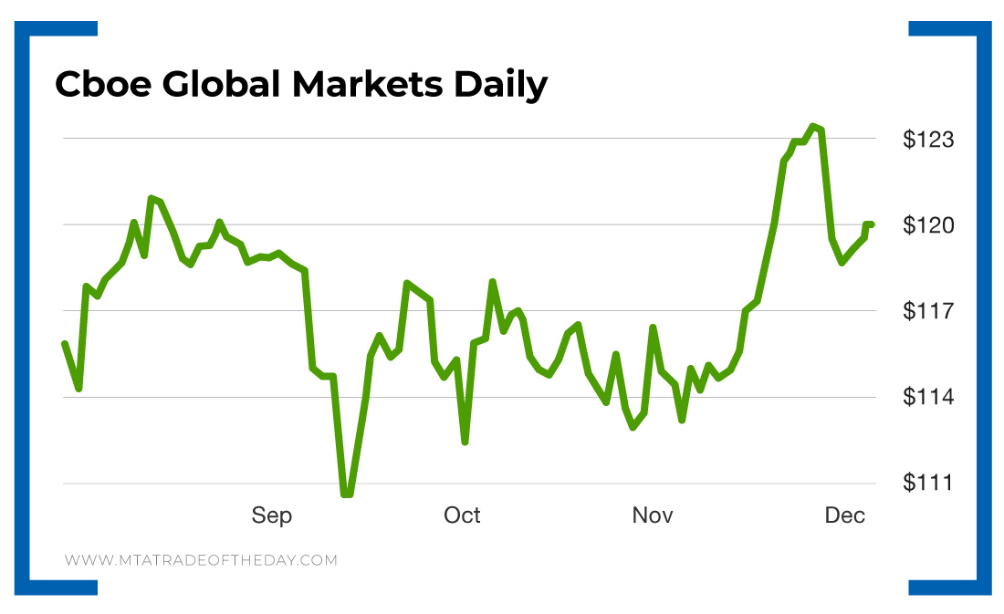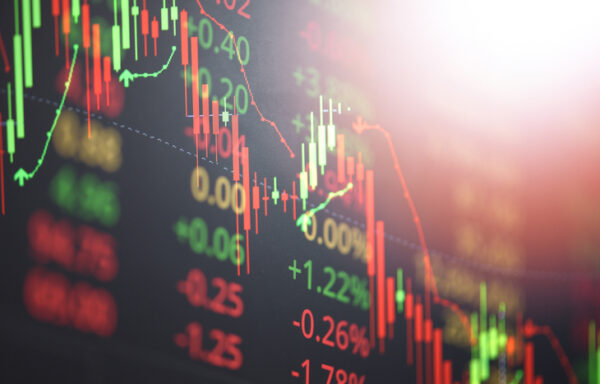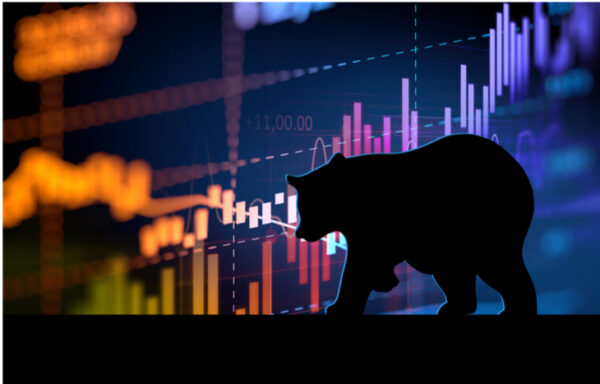Profit Off Volatility With Cboe Global Markets
In yesterday’s Trade of the Day, I asked…
Will December 2019 end a fantastic investing year with a Santa Claus rally? Or will 2019 end the way last year ended – with a massive market correction?
Well, this morning, we got a key component of that answer.
As I’m sure you know, President Donald Trump delivered the news that “the idea” of holding off on a U.S.-China trade deal until after the 2020 presidential election now has appeal.
As I’ve been reporting in The War Room, the market had priced in a Phase 1 deal for weeks – if not months – leading up to Q4. But today’s news completely undermined the market’s confidence that a deal will get completed before a new round of import tariffs are imposed on December 15.
In response, the Dow dropped more than 300 points before lunchtime. The Nasdaq dropped over 100 points.
Neil Wilson, chief market analyst for Markets.com, summed the market response up perfectly:
Markets simply aren’t priced for this; for a trade deal to be that far in the future – if one can even be struck at all. After weeks of making generally positive noises on a deal being very close, there is a real sense now that a deal is not so very near at all and markets need to reprice.
So once again, as traders, we find ourselves asking… How do we profit off this heightened level of market volatility?
For that answer, let’s refer back to a Trade of the Day issue I wrote on June 5 – because the best answer could be contained in this message:
In times of market chaos, you see heightened trading activity. This leads to larger trading volumes. And both of those things are great for the market exchange business model. In fact, we’ve been stressing this theme for weeks – and it’s been working beautifully.
Steven M. Sears (who writes “The Strike Price” column in Barron’s) supported this argument:
When institutional investors think the markets are going to convulse, they often buy the stocks of exchanges. Panic increases trading volumes, the argument goes. Exchanges make money each time someone trades, and they make even more money selling data to algorithmic trading firms that act on relationships and patterns often invisible to the human eye.
Add it all up, and its once again time to look at Cboe Global Markets (Nasdaq: CBOE).

Action Plan: Heightened periods of volatility always lead to stressful market environments – which is why Cboe Global Markets represents such a wise safe haven right now. The more trades that cross the tape (no matter whether they’re a buy or sell), the better Cboe Global Markets does.
Plus, Cboe Global Markets owns all of its proprietary trading data. Monetizing this valuable information represents a massive profit center going into 2020. If you’re worried about a repeat of December 2018, then Cboe Global Markets should be a name you’re adding to your defensive portfolio.
[adzerk-get-ad zone="245143" size="4"]About Bryan Bottarelli
Whether it was selling the Star Wars figures he collected as a little boy for 50 times their value or using the $125 he made cutting grass to buy a Michael Jordan rookie card that he later sold for $1,500, it was always clear that Bryan Bottarelli was a born trader – possessing the unique ability to identify opportunities and leverage his investments.
Graduating with a business degree from the highly rated Indiana University Kelley School of Business, Bryan got his first job out of college trading stock options on the floor of the Chicago Board Options Exchange (CBOE). There, he was mentored by one of the country’s top floor traders during the heart of the technology boom from 1999 to 2000 – trading in the crowded and lively Apple computer pit. Executing his trades in real time, Bryan learned to identify and implement some of his most powerful trading secrets… secrets that rarely find their way outside the CBOE to be used by individual traders.
Recognizing the true value of these methods, Bryan tapped into his entrepreneurial spirit and took a risk. He walked off the CBOE floor and launched his own independent trading research service called Bottarelli Research. From February 2006 to December 2018, Bryan gave his precise trading instructions to a small, elite group – most of whom have been followers ever since.
As a “play tactician,” Bryan uses his hands-on knowledge of floor trading to shape opportunities and chart formations into elegant, powerful and profitable recommendations. And by using the same hedging techniques taught by professional floor traders, Bryan is able to deliver his readers remarkable gain opportunities while strictly limiting their total risk.
Along the way, Bryan has developed a cumulative track record that could impress even the most successful hedge fund manager.
He now spends his days moderating one of the most elite trading research forums ever created: The War Room.






